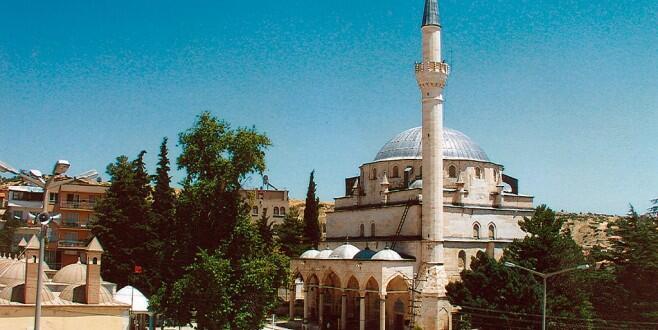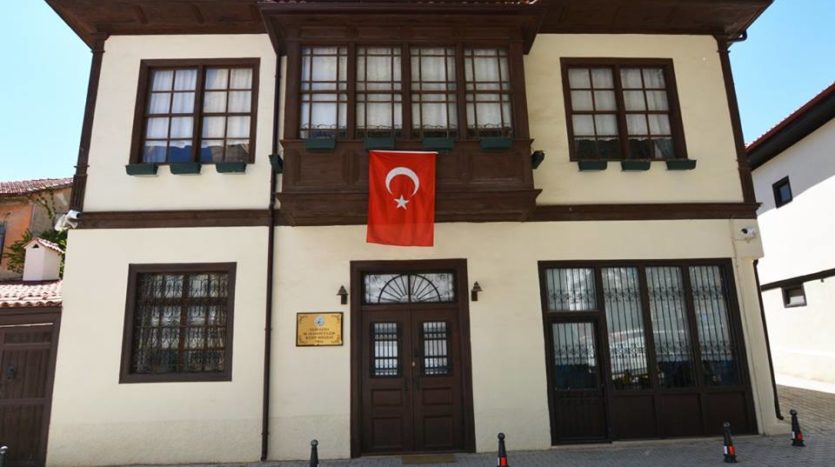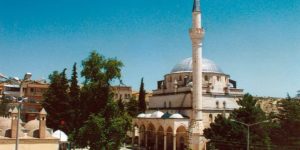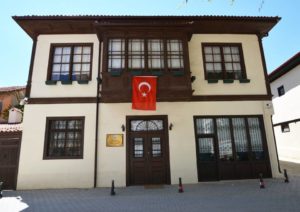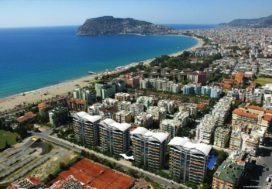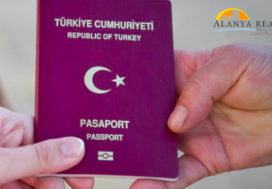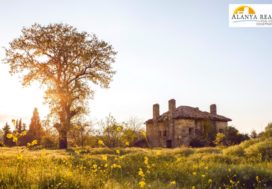Elmaly Turkey history tourism
Elmali Antalya
To learn about Elmaly’s history, we recommend that you read this article.
culture, tourism and agriculture. Elmalı is a district of Antalya Province in the west of the Mediterranean Region. It is 100 km away from the city center and 60 km away from the sea. There are 60 neighborhoods in the district. The Elmalı economy based on agriculture, about 10% of Turkey’s apple production has a significant place in the fruit and vegetable production.
HISTORY OF ELMALI
The history of the Elmalı district is 5th-4th BC. century begins with Lycians living in the region. The region remained under the rule of the Roman Empire, the Byzantine Empire, the Selçuk State, the Teke Principality and the Ottoman Empire.
Elmalı is one of the important cities representing the north of Lycia. The district is a region that has been intertwined with various civilizations. It is impossible to identify them in order. During the reign of Yıldırım Bayezid, Elmalı became the center of the Teke Liva and the residence of Teke Pasha in the early days of the Ottoman Empire. Upon the transfer of the administrative center to Antalya, Elmalı became an accident. The district was named as “Kabali, Emelas, Elmalı”.
WHERE TO SEE IN ELMALI
Elmalı is rich in history and natural beauties. You can find many tombs in Elmali, which is a region that has raised great religious leaders. I will give you information about the most important of these.
Deshemealti
CHAIN ROCK CONCEPT
Elmalı Mountain is at an altitude of 2250 m to the north of Elmalı. The establishment of the city began at the slope of Mount Elmalı. There is a large rock mass that breaks from this mountain, just like the city stands on the slope with a makeshift position. The story of this rock which is believed to be connected with the spiritual chain is as follows; At the foot of the mountain at the top of the city there is the dervish of Elmalı’s sufi poet and Halveti Sheikh Wahab-i Ummi (V.1004 H. / 1595 M.). One day, while he was engaged in dhikr and education with his disciples, there was a thunder and tremor, and a large rock mass separated from the mountain starts to roll over the city with all its speed. The horrors of this state, fear and panic.
Wahab-i Ummi Hz. At this exciting moment, he looks up against the rock mass rolling over the mountain and reaches out to God Almighty and makes such a prayer that he exclaims in a loud voice with the excitement of that moment, Allah from Meded Sen Zincir. This prayer shaking the eardrums astonishes everyone, because the rock mass that is rolling has stopped at a distance from the magazine and seems to have been stuck in its place since the 1500s. The people of the city called this chain “Chained Rock için to express that it is connected with spiritual chains by Allah.
VAHİB-İ ÜMMİ (V.1004H./1595M.)
It is the pyridine of Elmalı Halvets connected to the Ahmeddiyya branch of the Halvetiyyah Order. His full name is Abdülvehhab al-Ummi al-Elmali al-Halveti. He is known by his name Vahib-i Ümmi, which is widely used in his poems. Although his nickname is “Ummi,, this Ummism has nothing to do with literacy; on the contrary, he points out that he is a supreme person of high knowledge in Sufi sense.
The date of the birth of Wahhab-i Ummah, born in Elmali, is not known. Wahab-i Ummi, who completed his first scientific education in the madrasas in the region, received his sufism and spiritual training from the plight of the Ahmediyye branch of Halvetiyye Tariqat, Yiğitbaşı Veli Ahmed Şemseddin-i Marmaravi. With the death of Marmaravi, Elmali became a religious center through Wahab-i Ummi and maintained this position for nearly three centuries.
In some of his poems it is understood that Wahab al-Ummi lived a long life of 110-120 years because he complained that he could not sit up.
The best cities to live in Turkey
HISTORICAL ELMALI HOUSES
With its old bazaars, arastas and narrow streets, the region reflects the Anatolian culture by reaching the depths of history at every step and carrying the charm of its past to today; climate, natural beauties and Cedar Forests with great tourism potential.
The houses that adorn the district with their bay windows, old-style windows and bright colors are still standing upright as if to tell today of the past. Double-bay wooden apple houses, which inspire not only the life but also the viewing times, are as authentic as Safranbolu Houses and have managed to preserve many of its characteristic features to date.
Among the plan types of the Turkish house, the open sofas type is seen in the oldest house examples to date. The second feature of the Turkish house is the multi-purpose use of the room as a living unit. As another feature, if there is a second wooden roof rising above a masonry floor, the third floors constitute the main living area.
The wooden texture, which is an architectural element of these houses of at least 500 years, is abundantly used from the cedar trees which are the richness of the region. With its stylized trees, floral motifs and hexagonal stars in the ornaments, it is one of the unique examples reflecting Anatolian Culture.
Home In Taksim Istanbul
SINAN-I ÜMMİ (V.1067H./1657M.)
He is the sheikh of Niyaz-i Mısrî (V.1105H./1694M.), The founder of the Misriyya branch of the Halvetiyyah Order. Its full name is Yusuf Sinan-ı Ümmi, and it is mostly called “Ümmi Sinan” or “Sinan-ı ümmi”.
The birth date of Sinan-ı Ummi, born in Elmalı, is known for certain. However, it is estimated that he was born between 1563-1567 based on some sources. Sinan-ı Ümmi, who completed his first scientific education in the madrasas in the region, received his Sufi and spiritual education from Eroğlu Nuri Hz. As a professor, his scientific accumulation has given sermons and advice to the people on various occasions in the region. On the other hand, in his lodge, he gave moral, spiritual and mystical education, which prepared the disciples to Hakka vuslata.
OMER PAŞA MOSQUE
One of the most developed examples of the centrally planned single-domed type in the Ottoman Architecture building system is a masterpiece of the Mimar Sinan School built entirely of cut stone.
Built by Ketenci Ömer Paşa in 1610, Ömer Paşa Mosque, the largest and most spectacular work of southwestern Anatolia, is one of the few important examples of Ottoman Period Turkish Architecture in Anatolia.
3THOUSAND YEARS NORTH LYCIA ROAD
Ancient Northern Lycian Way is a road that goes back to history from the vicinity of the Elmalı’s Kisla District, passing through history, processing the serenity, unique, natural and historical beauties to your sou.
The main part of the Lycian region, which is a 4-meter-wide piece of art, rising from the ground with two rows of stone, is now 4 m wide and is much easier to walk. It is a high value road for Elmalı, a trade and administrative center which we think has taken its final shape during the Roman period when the Lycians worked in the construction of the construction which was supported by the Persians.
The original stones were covered with rubble and earth. Soil has been familiar for centuries, and even the road stones have been dismantled for use in nearby graves and wall constructions, and this part of the road has been called ‘NALDÖKEN nedeniyle because the remaining sharp stones have destroyed horseshoes.
The ancient stone paved road, which has survived to a great extent in the vicinity of Elmalı’s Kışla Quarter, is one of the most important routes connecting Antalya to the Aegean Sea from Korkuteli. The ancient Lycian way is a trade route that passes through the village of Bayındır and reaches Elmalı through the line of Baltasgedik and Wahab-i Ummi tombs.
Along the way, you can also find break places reminiscent of today’s recreational facilities.
Alongside the resting places along the ancient road, there are 1.5-2.0 m high, 1.5 m diameter stone piles made by placing natural stones of about 50 cm in diameter without overlapping. Among them, small stones of fist size, which can be easily retrieved and placed back, have no structural functions. It is believed that these stones were probably used to make sound by hitting large stones during the ritual. You can soak up the silence of this magical geography and imagine how rituals, presentations, ceremonies could be held here for a few minutes without talking.
HOMES OF HACIMUSAL (CHOMA)
It is located on the Elmalı-Kas highway, 14.5 kilometers south-west of Elmalı District, close to the Elmalı Plain. It is about 1040 meters above sea level. The mound has a round appearance and is 300 x 350m in size and 10-12 meters in height. There are terraces on the slopes of the mound; Elmalı Hacımusalar Mound, Bilkent University Department of Archeology Assoc. Dr. It was excavated by an excavation team under the direction of İlknur Özgen.
ELMALILI MUHAMMED HAMDİ YAZIR CITY MUSEUM
His contemporaries, who are rarely seen in the broader cultural culture, the Ottoman Empire, the last period of the Ottoman Empire, the first period of the Republican period, as well as the understanding of classical madrasah on both periods of the world’s ideas on both sides of the scholars, Religious Science, Tafsirci, Philosopher, Educator, Lawyer, Hattat, Elmalılı, one of the last period religious scholars known for his interpretation of ‘Hak Dini Quran Language’, which enlightens our mana and climate like oil lamps, which includes many special adjectives such as journalist writer, literist, poet, historian, researcher, translator, foundation expert, opinion and politics man. M. Hamdi Yazır City Museum, where the works of M. Hamdi Yazır is located, is a museum that welcomes thousands of people every year.
ELMALILI MUHAMMAD HAMDI YAZIR 1878-1942
Hak Religious is one of the last religious scholars known for its exegesis called Quranic Language.He was born in Elmalı, Antalya. Originally from Burdur Gölhisar district of Yazır village, his father Nüman Efendi served as chief clerk at Elmalı Şer’iyye Court. His grandfathers Mehmed Bekir Hasan and Bedreddin efendi belong to the science class and his mother Fatma Hanım is the daughter of Mehmet Efendi, who is one of the teachers of Elmalı. In addition to his primary and secondary education, Muhammed Hamdi Yazır completed his memory in Elmalı and went to Istanbul with his uncle Mustafa Efendi to continue his education and settled in Küçük Ayasofya Madrasa.
(1895) He received an authorization from Mahmud Hamdi Efendi from Kayseri, where he attended classes at the Beyazıt Mosque. After that, his teacher “Büyük Hamdi“ started to be known as “Küçük Hamdi“ and he used this signature in his writings. When the surname law came out, the name of his father’s village was taken as ‘Yazır’ surname and he became famous as ‘Elmalılı yerine rather than the birth place.
When the decision was made to prepare Turkish commentary in the Turkish Grand National Assembly, the Presidency of Religious Affairs offered this work to him and accepted the Elmalı proposal and finished his work entitled Hak Religious Quran Language before his death and brought it to our society. He passed away on May 27, 1942 in Istanbul and was buried in the Sahrayı-Cedid Cemetery.
ABDAL MUSA SULTAN
Abdal Musa Sultan, one of the famous saints and saints of Anatolia, is also a famous poet and thinker. He was originally from Khorasan: he came to Hoy Town of Azerbaijan and lived there for a while and is known as “Hoylu”.
He was the son of Hasan Gazi, the son of Haydar Ata, the uncle of Hacı Bektaş-i Veli. Abdal Musa Sultan of the Horasan Erenler and Hz. He is a prophet. 14yy. It is written in the historical sources that Orhan Bey participated in battles with his soldiers and showed great benefits during the years when the Ottomans conquered Bursa. One of the leading caliphs of Hacı Bektaş-i Velinin
The lodge, which was repaired in different periods, was demolished in time and today only the Tomb of Abdal Musa has been reused. In the tomb, there are the graves of Abdal Musa, his mother, father, sister and Kaygusuz Abdal.
AVLAN LAKE
Since ancient times, Avlan Lake has a natural landscape with its ecology, flora and fauna, which gives hope to the people living around it, adding fertility to the cedar forests to the agricultural areas.




